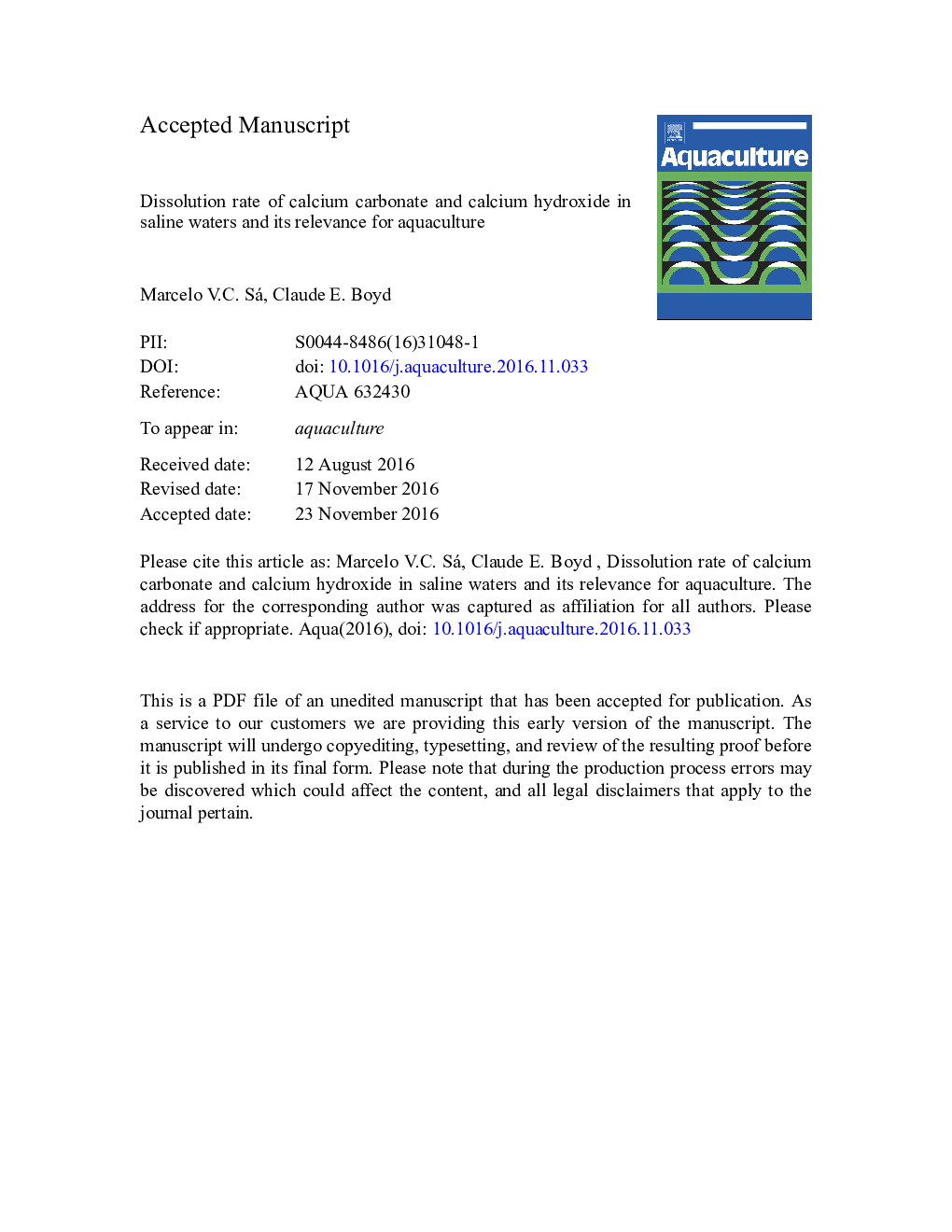| Article ID | Journal | Published Year | Pages | File Type |
|---|---|---|---|---|
| 5539140 | Aquaculture | 2017 | 21 Pages |
Abstract
The solubilities of calcium carbonate and calcium hydroxide were determined in four waters of different initial salinity, pH, and alkalinity (in parentheses, respectively) as follows: freshwater (0.01 g Lâ 1, 6.26, 2.79 mg Lâ 1); diluted seawater (3.7 g Lâ 1, 7.37, 13 mg Lâ 1); diluted seawater (11.0 g Lâ 1, 7.97, 35.3 mg Lâ 1); seawater (31.7 g Lâ 1, 8.12, 109.1 mg Lâ 1). Calcium carbonate (97% pure) was added to four 2000-mL flasks of each water at 1.00 g each. After 32 days, the pH was between 8.1 and 8.3 in all flasks. Alkalinity reached approximately 60 mg Lâ 1 in waters initially at 0.01, 3.7, and 11.0 g Lâ 1 salinity. In the seawater, alkalinity decreased slightly after 32 days. Analysis of results suggested that alkalinity would not increase at a Langelier saturation index of 0.62 or more. Flasks of seawater were treated with calcium hydroxide at rates of about 0, 12, 25, and 76 mg Lâ 1 of Ca(OH)2. The pH 24 h after treatment ranged from around 8.2 to 8.6. Results of this study revealed that calcium carbonate does not dissolve in seawater and that the equilibrium alkalinity concentration in lower salinity water was about 60 mg Lâ 1. Calcium hydroxide - even at 75 mg Lâ 1 - did not cause a large increase in pH of seawater. These findings cast serious doubt on the effectiveness of the widespread use of agricultural limestone and lime in shrimp aquaculture ponds.
Related Topics
Life Sciences
Agricultural and Biological Sciences
Aquatic Science
Authors
Marcelo V.C. Sá, Claude E. Boyd,
